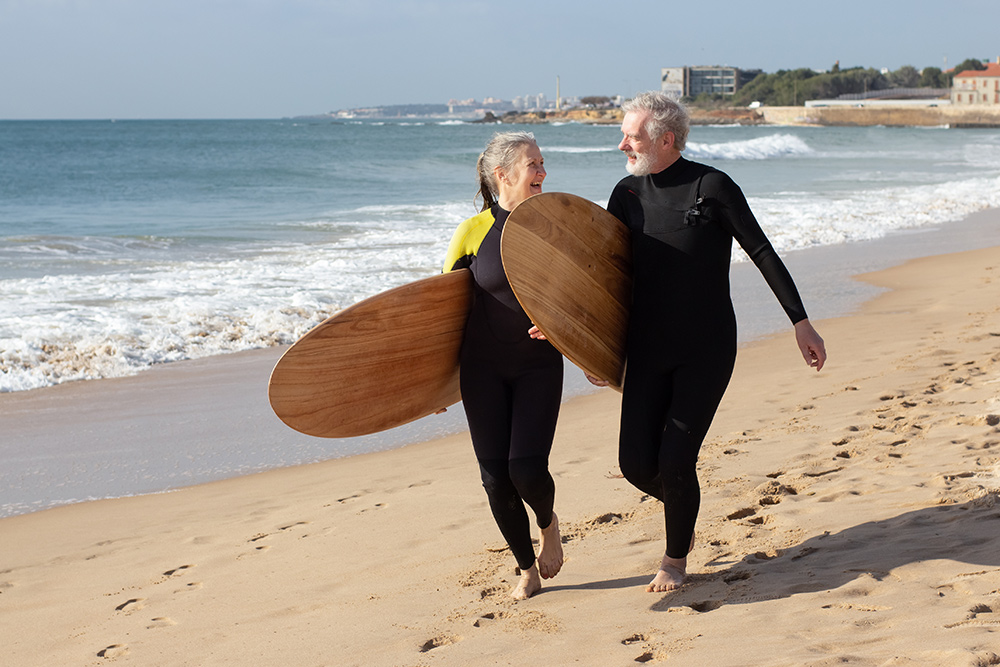A guide to arthritic pain and how to alleviate your symptoms.
For many Australians living with arthritis, describing the pain isn’t as straightforward as saying it’s just an “ache” or “discomfort”. The experience can be multifaceted, affecting both physical and emotional well-being. So, what does arthritis pain feel like?
In this post, we’ll delve deeper into what joint pain feels like, how it impacts the lives of those affected, and what can be done to alleviate it.
If painful arthritis is holding you back, contact ArthritisCARE and make an appointment with one of our Rheumatologists. Our comprehensive and holistic approach is designed to treat all aspects of arthritis, not just the physical symptoms.

Understanding the type of arthritis and associated pain and symptoms is the first step in the effective management of your condition.
What is arthritis?
Arthritis isn’t just one condition, but a collection of autoimmune and other other joint diseases. The signs and symptoms you have will depend on what type of arthritis you have. You can explore our comprehensive guide on available arthritis treatment here.
Different types of arthritis.
There are over 100 different types of arthritis, including:
- Osteoarthritis
- Rheumatoid arthritis (otherwise known as RA)
- Gout
- Juvenile idiopathic arthritis
- Psoriatic arthritis
The most common forms are osteoarthritis and rheumatoid arthritis, however, at ArthritisCARE we see and treat many forms. You can find a more extensive list here.
What causes the pain felt with arthritis?
The primary cause of the pain is joint inflammation in the affected joint. This leads to swelling, stiffness and tenderness. Other causes of pain can include:
- Joint damage caused by a breakdown of the cartilage, ligaments or tendons
- The presence of uric acid crystals in your joints (such as in gout)
- Damage or inflammation to the joint lining
You can see how the type of arthritic disease you have can determine the cause of your pain. For example, rheumatoid arthritis pain is caused when your immune system attacks your healthy tissue, causing inflammation and painful swelling of many joints at once. In comparison, osteoarthritis pain is caused when the cartilage in a joint is damaged and may only impact one or a few joints at a time.
What does the arthritis pain feel like?
Again, the pain can change depending on what type of arthritis you have. This is why a Rheumatologist is the best doctor to consult if you suspect you are developing arthritis. They are experts at differentiating between the different arthritis symptoms and forming an accurate diagnosis.
So what do painful arthritic joints feel like?
- The pain from arthritis can come and go, or be constant
- It can be dull and persistent or sharp and sporadic
- It may be a burning sensation or a throbbing pain
- You may experience only slightly painful joints or more severe pain
- It can occur after moving or exercising, or when you’re at rest
- You may have pain and stiffness in the morning, or all-day
- The pain can be just in weight-bearing joints, two or more bones, the small joints, the same joints on either side of your body, or all different parts
- You may experience joint swelling or no swelling at all
So, as you can see the pain and joint symptoms associated with arthritis are broad and vary widely between people.

What does arthritis pain feel like? It varies for each of the different types of arthritis, so it is important to understand all you can about your condition so you know what to expect.
The physical impact of pain.
Pain can have a big impact on a person’s quality of life. It can lead to:
- Physical (and emotional) fatigue, or chronic fatigue
- Poor sleep
- Impaired immune system functioning
- Decreased mobility
- Restricted movement
- Changes to your cardiovascular system or brain structure
- Gastrointestinal issues
Pain from arthritis is not an isolated experience, but a complex and holistic reaction requiring appropriate management and medical treatments.
The emotional impact of pain.
Beyond the physical aspects of acute or chronic pain, there can be a profound emotional impact. It can lead to feelings of frustration, anxiety and depression. Chronic pain may also affect your self-esteem, confidence and overall outlook on life.
How to alleviate the pain.
There are many things you can do to alleviate the pain associated with your particular type of arthritis. A Rheumatologist can work with you to form a treatment plan to help manage your symptoms and live with arthritis.
Lifestyle modifications and therapies
Simple lifestyle changes can make a world of difference:
- Exercise regularly to keep the joints mobile. Low-impact activities like swimming, walking or yoga are best
- Maintain a healthy weight to reduce the strain on joints
- Eating a healthy diet can reduce symptom severity
Other therapies can also reduce pain and other symptoms:
- Hot and cold therapy
- Physical therapy with a physiotherapist, an occupational therapist or a massage can provide pain relief
- Modifying your home to protect your joints with things such as stair rails, shoe horns or grippers

Low-impact exercise like swimming is a great way of relieving pain associated with arthritis, as well as improving your overall health and fitness.
Medical intervention
If joint pain is persistent or limits you from your daily activities, there are other options your health care professional can recommend to manage pain:
- Pain relief such as paracetamol
- Anti-inflammatories like ibuprofen
- Prescription medications, depending on the type of arthritis
- Medications to support your immune system
- In severe cases, joint replacement surgery or other surgery may be recommended
Further support and resources.
Living with arthritis and joint pain may be challenging at times, but you are not alone. Check out our page of helpful resources, groups and organisations created to offer support for those people with arthritis. Find it here.
Understanding your arthritis and the associated pain and symptoms is your first step in managing your condition effectively. With the right knowledge, support and treatment plan, you can live a full and happy life.


